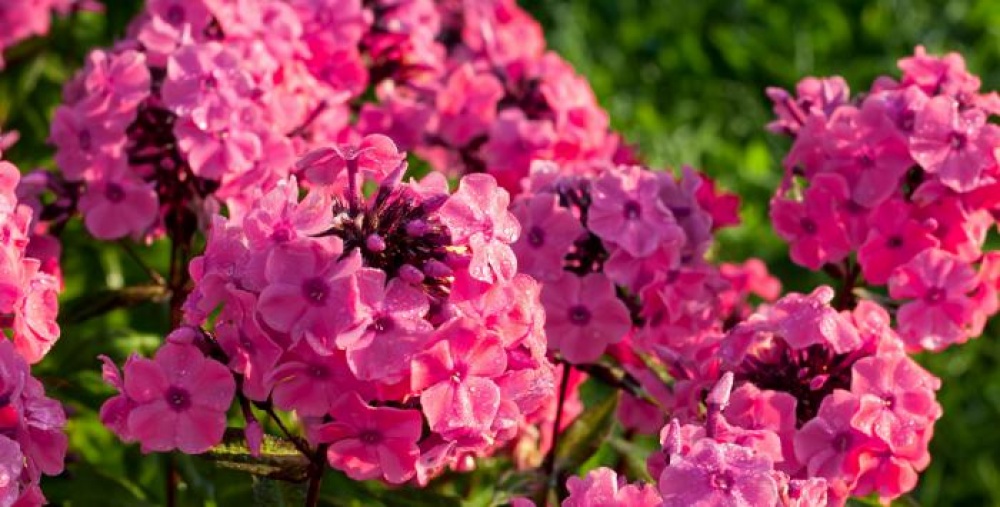A colourful garden all summer long

We spoke to Vanessa Cook of Stillingfleet Gardens and Nurseries
This is such a busy time in the garden and we are beginning to reap the results of earlier plantings. In December I invested in a new greenhouse – the small lean-to we had had for many years was overflowing with precious plants I was trying to protect from the winter’s evils. Now I am faced with a large space, almost empty, because all the overwintered salvias and geraniums have been removed, either to the polytunnels or into pots in the garden. This is exciting and I have already filled some of the space with tomatoes. In the past I have used grow bags and found it impossible to keep them watered, so now I am using large pots. I always buy small tomato plants as this means I can have several different varieties. If you use seed you end up with far too many plants all the same. This year I have grown ‘favorita’ (which is a cherry tomato full of flavour), ‘encore’ (a medium-sized red variety which tasted delicious), ‘yellow mini’ (a very productive tomato with masses of tiny yellow fruit) and of course we had to have a couple of ‘John Hawkins’, which produces huge, juicy fruit which I like to grill covered with garlic or slice sprinkled with basil.
Basil is one of the herbs I am growing in the greenhouse. I have found it almost impossible to grow outside and it is easy from seed. Tarragon is also in the greenhouse as it seems to be needed in more and more chicken recipes. If you buy a plant make sure it is French not Russian tarragon – the Russian is a perennial but does not taste nearly as good.
This year I have grown two varieties of kale, both of which find spaces in the borders as well as the vegetable plot. The first is ‘Nero di tosca’ which has long, narrow, grey-green leaves and mixes well with other plants. The second kale I grow is ‘redbor’ which has red curly leaves. I mix this with atripex (red orach) in the borders and find they work well as long-lasting foliage. The orach does subsequently seed around but is very easy to remove and I will forgive it for its elegant narrow exclamation mark in the border. I now have to admit that my husband, who does all the cooking, loathes kale so we have wonderful lush untouched plants here in the vegetable garden.
August is the time for phlox in the garden and although they have not been popular for some years they are once again being discovered as we all want flowers throughout the season and August is one of the more difficult months for colour. For a start they do not usually need staking (a big plus for me) and they flower in that August lull. Best of all, several varieties have sensational scent. We grow phlox ‘Mount Fuji’ in our white border and phlox ‘starfire’, which has dark red foliage and scarlet flowers. My favourites for scent are phlox ‘Monika Lynden-Bell’, which has the palest pink flowers and phlox ‘blue paradise’, with violet-blue flowers. This I have near my kitchen door and the scent carries all round the small pear tree garden. There are also several varieties with variegated foliage which look good from early in the summer, so giving more interest through the year. We grow phlox ‘Norah Leigh’, which has good white edging to the leaves and mauve flowers, and phlox ‘harlequin’, which has foliage with both white and pink variegation and pretty purple flowers. All phlox need good fertile soil and not to be waterlogged in the winter.
The other plants at their best in August are the salvias. This is an amazing group of plants going from tender annuals through half-hardy perennials to varieties which will survive the coldest winters. I would think that nearly everyone grows the culinary sage, so essential for sage and onion stuffing. All salvia officinalis forms are evergreen and there are yellow variegated forms as well as my favourite, the purple foliaged form. This looks good anywhere and grows well in large pots, perhaps with puce petunias to show off the wonderful leaf colour. This group of salvias all need well drained sunny conditions to grow well.
The next group of salvias I would like to encourage you to grow are the hardy herbaceous forms. We grow two excellent salvias with vertical spikes of blue flowers; salvia ‘caradonna’ has purple black stems about 45cm tall, covered with tiny violet purple flowers, good mixed with yellow achilleas or hemerocallis, while salvia ‘mainacht’ is a similar German hybrid which is very hardy. Both varieties will flower for a long time if dead headed. There are other hardy varieties with white or pink flowers so it is easy to find a variety that will suit your colour scheme and the narrow upright growth is ideal for adding shape amongst so many plants which are often billowy in shape in mid summer.
Next month I would like to talk about the many annual and non-hardy salvias (they are so useful to fill gaps in borders left by plants that flowered earlier). In the meantime enjoy your garden and summer weather!
Stillingfleet Lodge Gardens, York
www.stillingfleetlodgenurseries.co.uk




